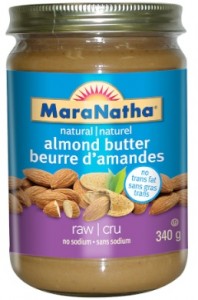The MaraNatha almond butter plant linked to a national outbreak of Salmonella Braenderup was observed to have food safety flaws ranging from hard-to-clean floors, imperfect almond-moving equipment, a hand-washing issue and a dirty food-contact surface, according to FDA inspection documents obtained by Food Poisoning Bulletin. The observations of five FDA inspectors cover visits they made to the plant in Ashland, Oregon, from July 15 through August 29. The top finding was a positive result from floor swabs that found Salmonella bacteria under two different cooling towers. The towers handle pasteurized almonds.
 A variety of MaraNatha brand almond butters were recalled by the inspired Natural Foods plant on August 19 because of potential contamination with Salmonella. Also recalled by the company, a division of Hain Celestial Group, were store brand almond butters produced in the plant for retailers Trader Joes, Whole Foods, Kroger and Safeway. The Centers for Disease Control and Prevention (CDC) continues to warn consumers not to eat the products, which have shelf lives ranging through the middle of next year. Health officials are concerned that more people will get sick if they are unaware of the almond butter recall details. So far, the outbreak has been confirmed in people who live in Texas, Iowa, Connecticut and Tennessee.
A variety of MaraNatha brand almond butters were recalled by the inspired Natural Foods plant on August 19 because of potential contamination with Salmonella. Also recalled by the company, a division of Hain Celestial Group, were store brand almond butters produced in the plant for retailers Trader Joes, Whole Foods, Kroger and Safeway. The Centers for Disease Control and Prevention (CDC) continues to warn consumers not to eat the products, which have shelf lives ranging through the middle of next year. Health officials are concerned that more people will get sick if they are unaware of the almond butter recall details. So far, the outbreak has been confirmed in people who live in Texas, Iowa, Connecticut and Tennessee.
According to the inspection document, the FDA team listed eight “inspectional observations” that do not represent a final agency determination regarding the almond butter plant’s compliance with food safety laws. The hand-washing incident involved a worker who went from running an electric pallet jack to handling dried, pasteurized almonds without washing. The employee touched the inside of a plastic bucket that was then used to move the almonds into cardboard boxes, the document said.
The equipment notices pertained to almond-handling buckets and shovels that were cracked or improperly welded, leaving areas for bacteria to harbor. The shovels had rough welds, as did a steel auger that conveyed nuts for the production of nut butters. The Salmonella recall associated with the plant also included a few lots of MaraNatha peanut butter.
The inspection report also noted numerous cracks and gouges in the floor, including a crack more than 20 feet long. “The plant is not constructed in such a manner as to allow floors to be adequately cleaned and kept clean,” the inspectors wrote. The report said that the positive Salmonella samples were found on flooring beneath a pair of cooling towers stationed in the plant’s bakery, where almonds are pasteurized. According to the CDC, the first signs of Salmonella Braenderup at the nut butter plant were noticed during a routine FDA inspection in January. The bacteria was genetically “fingerprinted” and later matched to the very same strain of Salmonella that was making people sick.
Regarding the ongoing Maranatha almond butter Salmonella investigation, CDC and state and local public health partners are continuing laboratory surveillance through a national computer monitoring program to identify additional ill persons .




